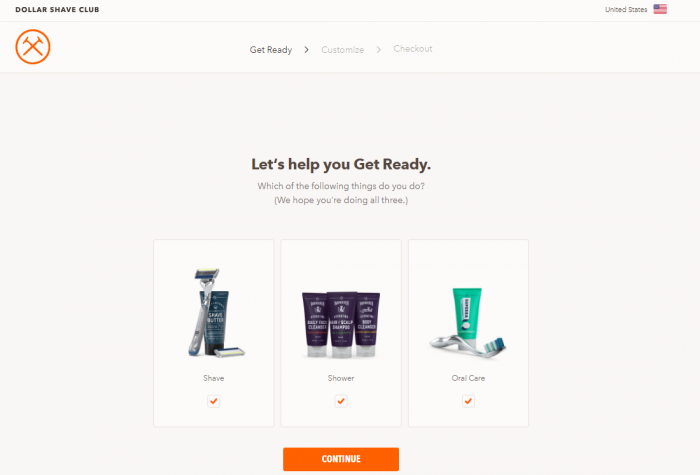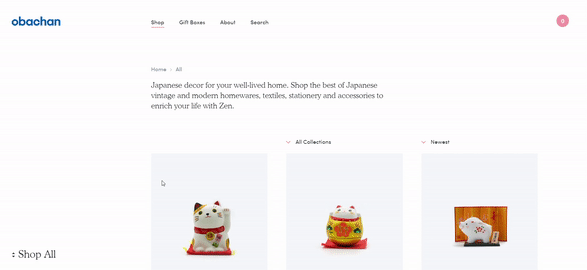The psychology behind understanding user behavior and how to translate it into a winning UX
By: Toya Lazarevic, UX/UI Designer (Sydney)
Our behaviors are driven by day-to-day decisions that can make our lives easier. Let’s, for example, assess a typical workday. In the morning, you choose to take the train over the bus because you’re less likely to be delayed. Come lunch, you go to your regular sandwich shop because it’s close to your office and the server knows you by name – if your name was, “chicken caesar wrap, no mayo”. Before heading home for the day, you make travel arrangements for the third time this quarter. You choose the same mediocre airline because you’re just so close to hitting the next level of air miles and those warm chocolate chip cookies always get served on both legs of the trip.
There are underlying patterns of behavior that can be quantified and utilized to enhance many user experiences, especially for consumers making an online purchase. Understanding the psychology of behaviour can be an invaluable tool to help navigate the uncertainties of consumer behavior in order to craft a rewarding experience – they are, after all, only human. By incorporating some key principles in psychology to UX decisions, common UX issues can be solved quickly and efficiently leading to better engagement outcomes.
To help guide the understanding of why users do or want the things they do, here are 5 psychological principles accompanied by real-life examples to illustrate the combined power of the psychology behind user experience (UX).
1. People respond to positivity – reinforcement and feedback.
We all welcome positivity in many aspects of our lives. From reinforcement to feedback, they have the ability to generate a positive mindset that can permeate to everyday situations such as a more productive workday or affirm confidence in a completed purchase. In the study of Pavlov’s dogs, they discovered a correlation between ringing a bell and the dogs salivating in anticipation of receiving food thus uncovering the psychological response of positive reinforcement. Similarly, psychologists studied the impact of feedback, ranging from positive, negative to none, on children and their performance on a given task. Unsurprisingly, they found that positive feedback promotes motivation and confidence in achieving goals.
These principles can be applied to user experience psychology as it encourages repeated action through rewards whether that be an exclusive offer for a completed purchase or celebrating an action taken. By doing this, you are providing a positive experience which in turn may foster a long-term relationship with consumers.
In this example, a Japanese homewares retailer provides positive reinforcement of a consumer adding an item to their shopping cart with celebratory emojis. A small yet delightful response to elicit a desired action: add to cart.
2. People dislike too much choice – Hick’s Law.
If you have ever been to a diner, you know how difficult it can be to choose an order. From the breakfast selection to salads and burgers, if you’re in a lunch mood, to dinner items – eating at a diner can cause a surprising amount of stress. This experience is called Hick’s law based on a study that examined the correlation between the number of stimuli presented with their reaction time. This study found that participants found it increasingly more difficult to make a choice when presented with larger amounts of stimuli. When it comes to user experience, reducing the number of choices a consumer can make may alleviate their internal struggle to ultimately make a decision.
Direct-to-Consumer brand, Dollar Shave Club has applied this principle not just to their UX but their overall business strategy. The men’s grooming company presents consumers with three aspects of male care: shave, shower and oral care. Consumers are encouraged to choose all three (the checkboxes are marked off upon landing on the page) but once the selection is made, the consumer continues to checkout. The product selection process is limited to just one decision allowing consumers to continue on and complete their purchase.

3. People prefer simplicity – Law of Pragnanz.
For the non-art aficionados, we tend to perceive a work of art as a whole rather than the many components that it is made up of. We eliminate perceived complexities, such as brush strokes, in order to easily digest the subject and determine we are looking at a painting. Our minds prefer simplicity in order to reduce cognitive effort to quickly recognize what we are looking at. This is the Law of Pragnanz, a German term which roughly translates to concise or meaningful. This principle is a no-brainer when it comes to user experiences. We don’t want users to reorganize what they see on a site into a simpler form, as this amount of cognitive effort will only leave them with a negative experience.
The UK classifieds company, Gumtree, recently underwent a site-wide rebrand. They simplified the layout by moving the list of categories to the top navigation and highlighted the key action they wanted the user to take, which was to search what they were looking for. By removing the noise of all the categories in the old interface, Gumtree has managed to reduce a user’s cognitive effort and focus them on the task at hand: searching for products.


4. People have limitations – the psychological refractory period.
On any given day, we have a laundry list of tasks to complete. Whether that be your morning routine to get ready for work or multitasking your to-do list that needs to be completed by noon – it’s unlikely that in these types of situations, our focus is entirely on the primary task. This is what is called the psychological refractory period, whereby when presented with two stimuli, either consecutively or concurrently, responses slow dramatically to the second stimuli which prevent the completion of tasks.
There is an interesting case study that showed the undeniably positive results of an anonymous retailer adjusting their checkout process by changing one button from “register” to “continue”. Like a number of retailers, this brand was encountering high cart abandonment rates due to a seemingly cumbersome checkout experience. By removing the burdensome term “register” and replacing it with “continue”, all perceived barriers were removed and consumers were able to bring their focus back to their primary task: completing a purchase.

5. People are biased – conforming to mental models.
It’s human nature to construct a perception or belief about something based on our prior experiences and influences. I tend to go to my local grocery store mainly because I know precisely how the store is laid out, cutting my shopping time in half. These biases were described by psychologist Kenneth Craik as the concept of mental models. In the world of digital interfaces, mental models are formed based on prior experiences and assumptions on how a product should work and other users’ product reviews. The placement of a checkout button is a great example of structuring your site to conform to a user’s predefined mental model. In instances like this, there is no point in reinventing the wheel, but rather utilizing what has worked for other digital interfaces to make your user’s journey seamless.
That isn’t to say that mental models cannot be altered. In the case of launching new products, you must help users overcome their mental models in order to prime them for proper use. Apple can be seen doing this through their launch forums prior to public release. This type of educational period should be followed up with accompanying materials throughout the rollout as well as in-product training tips.
Implementing key psychological principles can help optimize your user’s experience with your product. Psychology principles not only allow us to back up our assumptions quickly, they also help us inject more humanity into our decision making. At Rokt, we are investing more into our user experiences with our newly appointed SVP, who has already made important changes to simplify the Rokt UX, delivering a better experience for our clients and end users. UX decisions can be informed ones if we just leverage the research that’s already out there or even conduct our own. The human mind is quite the labyrinth but armed with the right psychological principles, we can attempt to unlock some of those complexities in order to provide digital consumers with positive online experiences.



